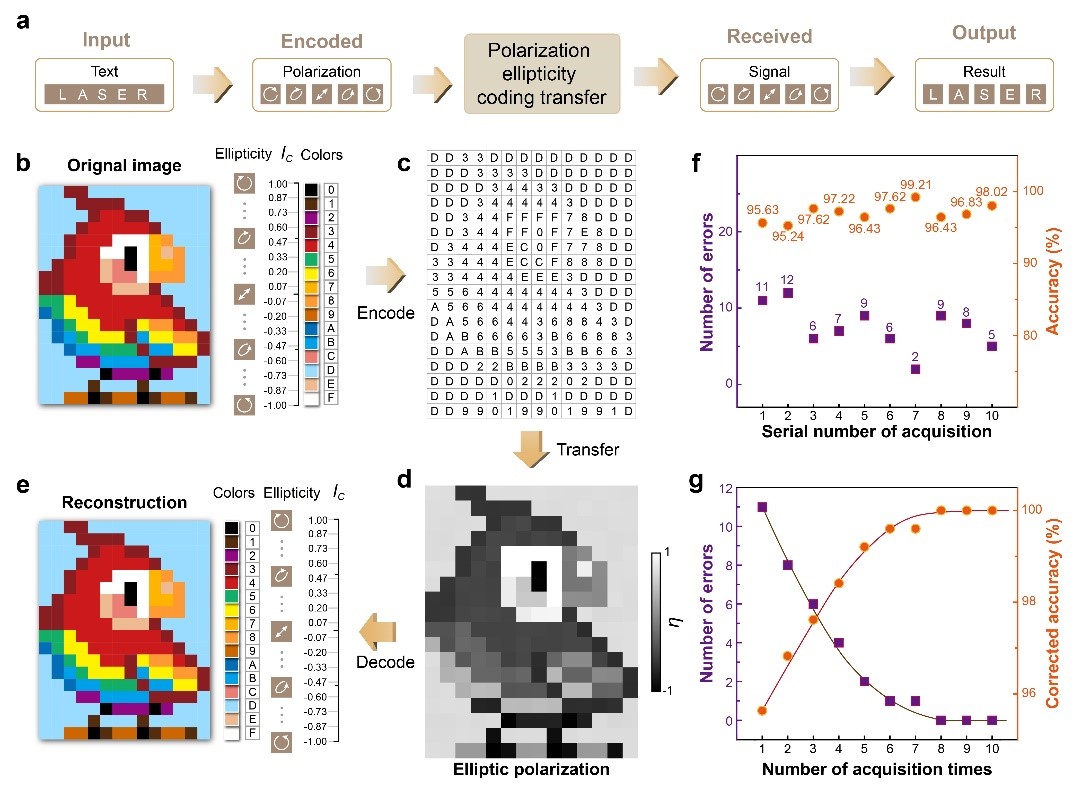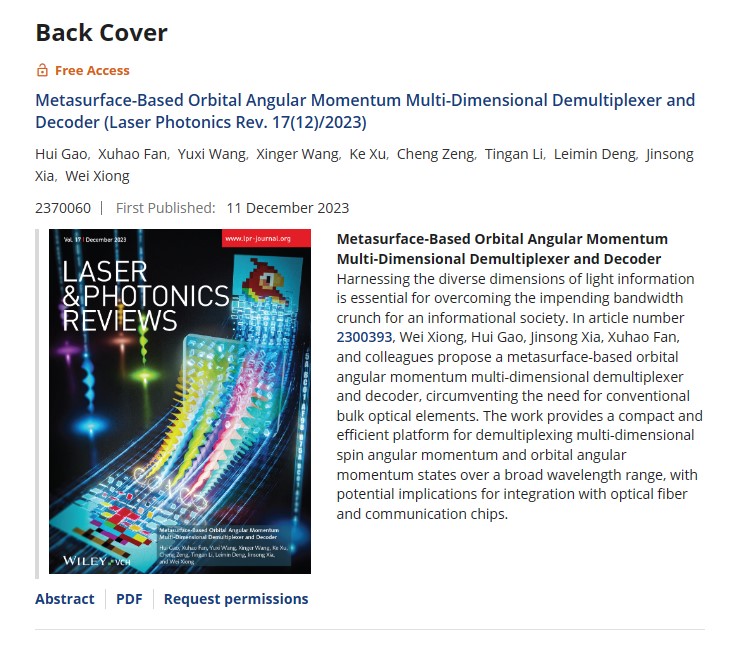Increasing the capacity of optical communication systems is essential for overcoming the impending bandwidth crunch for our modern and future life. Over the past decades, many significant advances have been achieved by utilizing the fundamental properties of light, such as polarization states and wavelengths, which led to the development of polarization division multiplexing (PDM) and wavelength division multiplexing (WDM) techniques. In addition to these intrinsic characteristics, orbital angular momentum (OAM) is another critical degree of freedom for the modulation of light field. Vortex laser beams carrying OAM have attracted much attention due to their novel phase and intensity distributions. The unlimited topological charge values corresponding to different eigenmodes of light waves provide a potential approach for infinitely expanding communication capacity.
OAM demultiplexers are critical devices for these communication systems. Demultiplexers of traditional FSO communication systems are based on spatial light modulators, digital optical devices, or Daman grating, in which usually the interval of topological charges is relatively large to reduce crosstalk between neighboring modes. However, it limits the capacity. In addition, the bulk volume of elements and complicated system designs make these schemes unsuitable for practical implementations. Moreover, these demultiplexers can only respond to a specific polarization state or operate at a specified wavelength, limiting the potential to simultaneously combine other multiplexing methods.
Recently, a joint research team led by Prof. Wei Xiong, Prof. Jinsong Xia and Prof. Hui Gao proposed a single-layer dielectric metasurface platform that enables multi-dimensional demultiplexing and decoding, circumventing the need for conventional bulk optical elements. The platform can demultiplex three-dimensional light parameters (wavelength, SAM, and OAM) and focus them at distinct spatial positions on a designated focal plane, providing a superior alternative to far-field beams for integration with optical fiber and communication chips.

Fig. 1. Schematic of the metasurface-based OAM multi-dimensional demultiplexer.
The research team verified 132-bit independent channels for a multi-dimensional demultiplexer and demonstrated the metasurface-based component’s ability to function as an elliptic polarization decoder through a 4-bit elliptic polarization coding transmission experiment. This work provides a compact and efficient platform for demultiplexing multi-dimensional SAM, and OAM states over a broad wavelength range, with potential implications for optical communications, optical data storage, optical information encryption, and quantum information sciences.

Fig. 2. Proof-of-concept experimental demonstration of polarization ellipticity for data information transfer.
Related work has been published in Laser & Photonics Reviews, titled ‘Metasurface-Based Orbital Angular Momentum Multi-Dimensional Demultiplexer and Decoder’, on December 11, 2023 (https://doi.org/10.1002/lpor.202300393), and was selected as the cover story for the current issue. The first unit for this research is the Wuhan National Laboratory for Optoelectronics, Huazhong University of Science and Technology, and it has been funded by the National Key Research and Development Program of China (2021YFF0502700), the National Natural Science Foundation of China, Young Elite Scientists Sponsorship Program by CAST, West Light Foundation of the Chinese Academy of Sciences, the Knowledge Innovation Program of Wuhan-Shuguang, the Innovation project of Optics Valley Laboratory, and Hubei Provincial Natural Science Foundation of China.

Fig. 3. Cover story of Laser & Photonics Reviews(Volume 17, Issue 12, 2023)